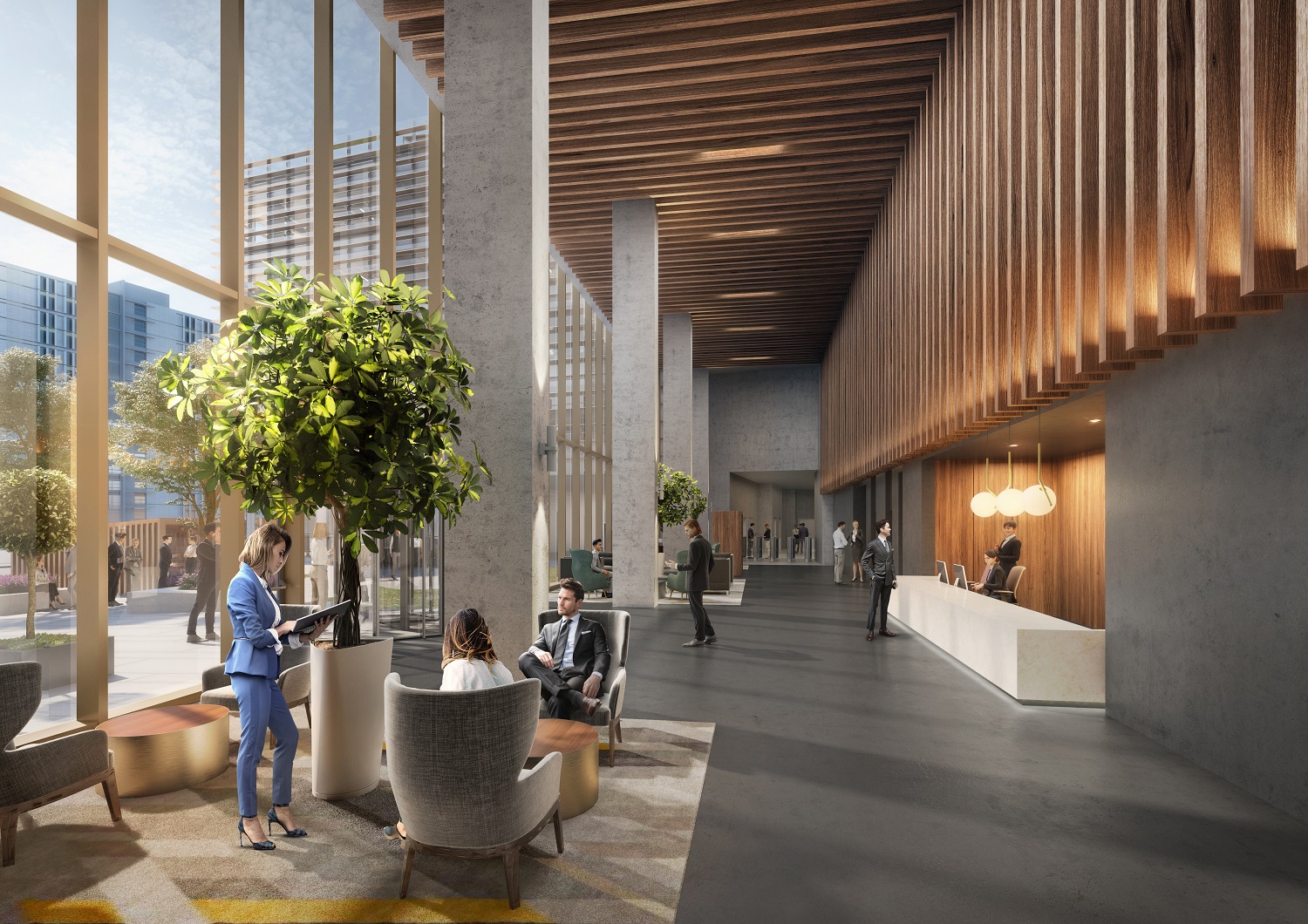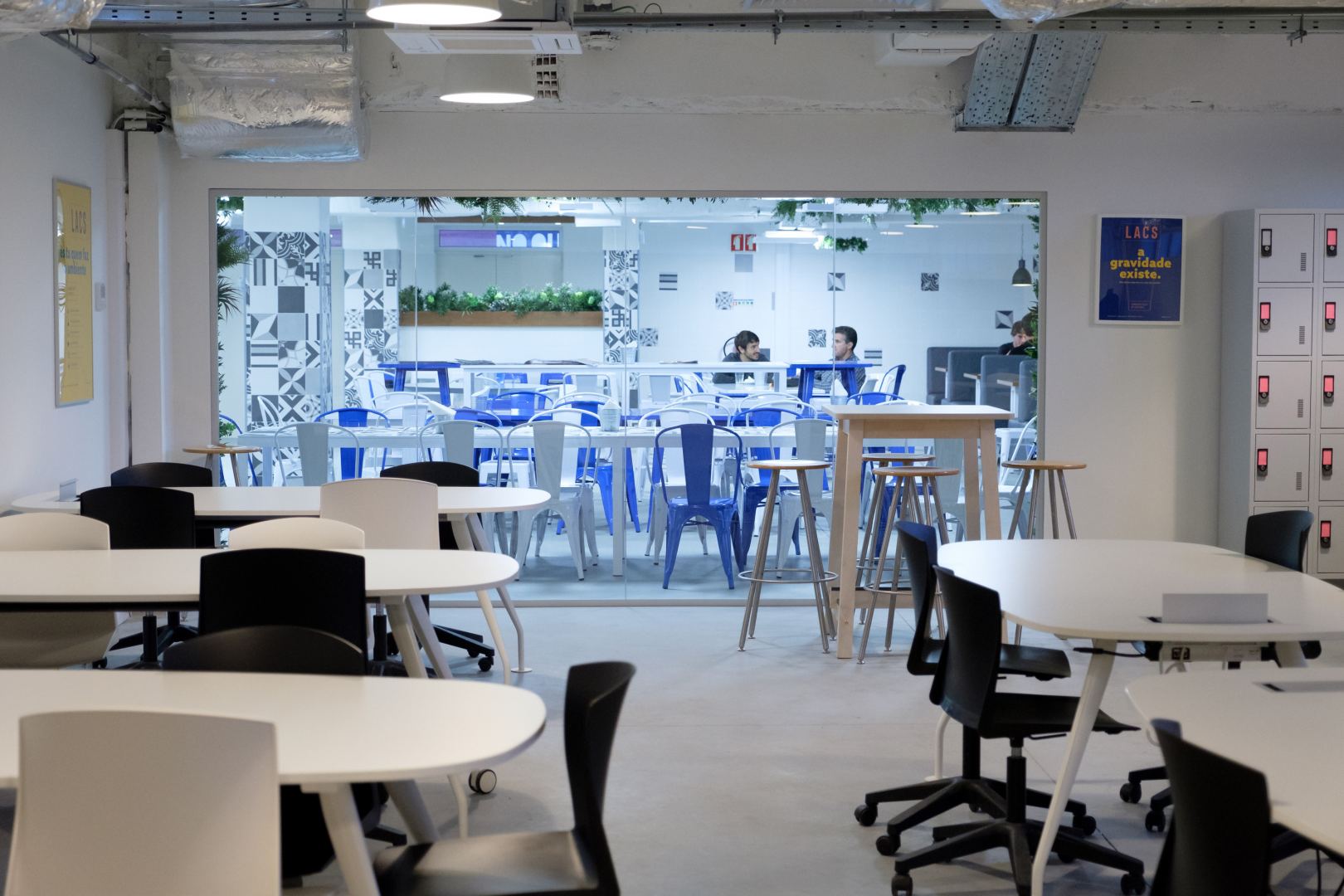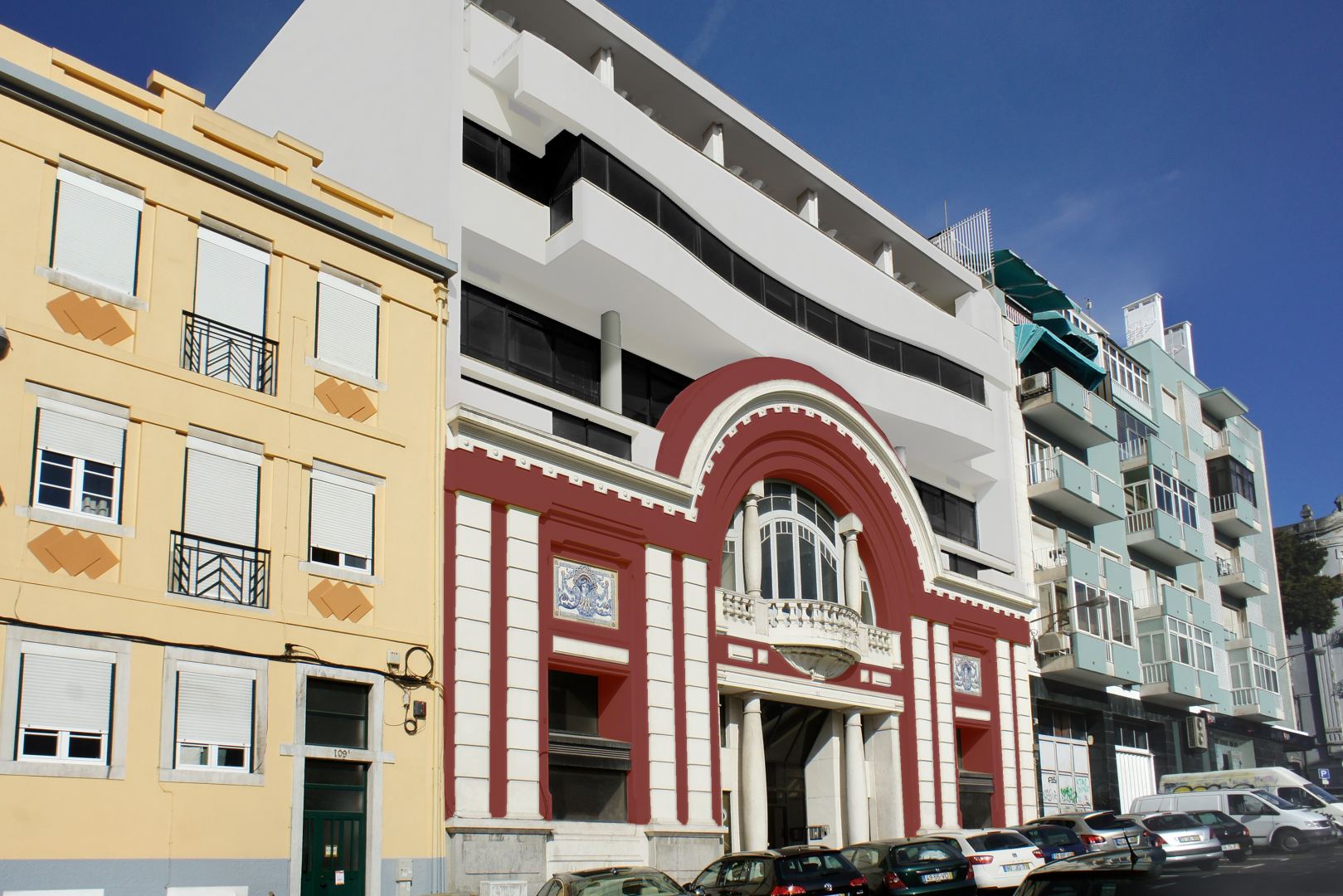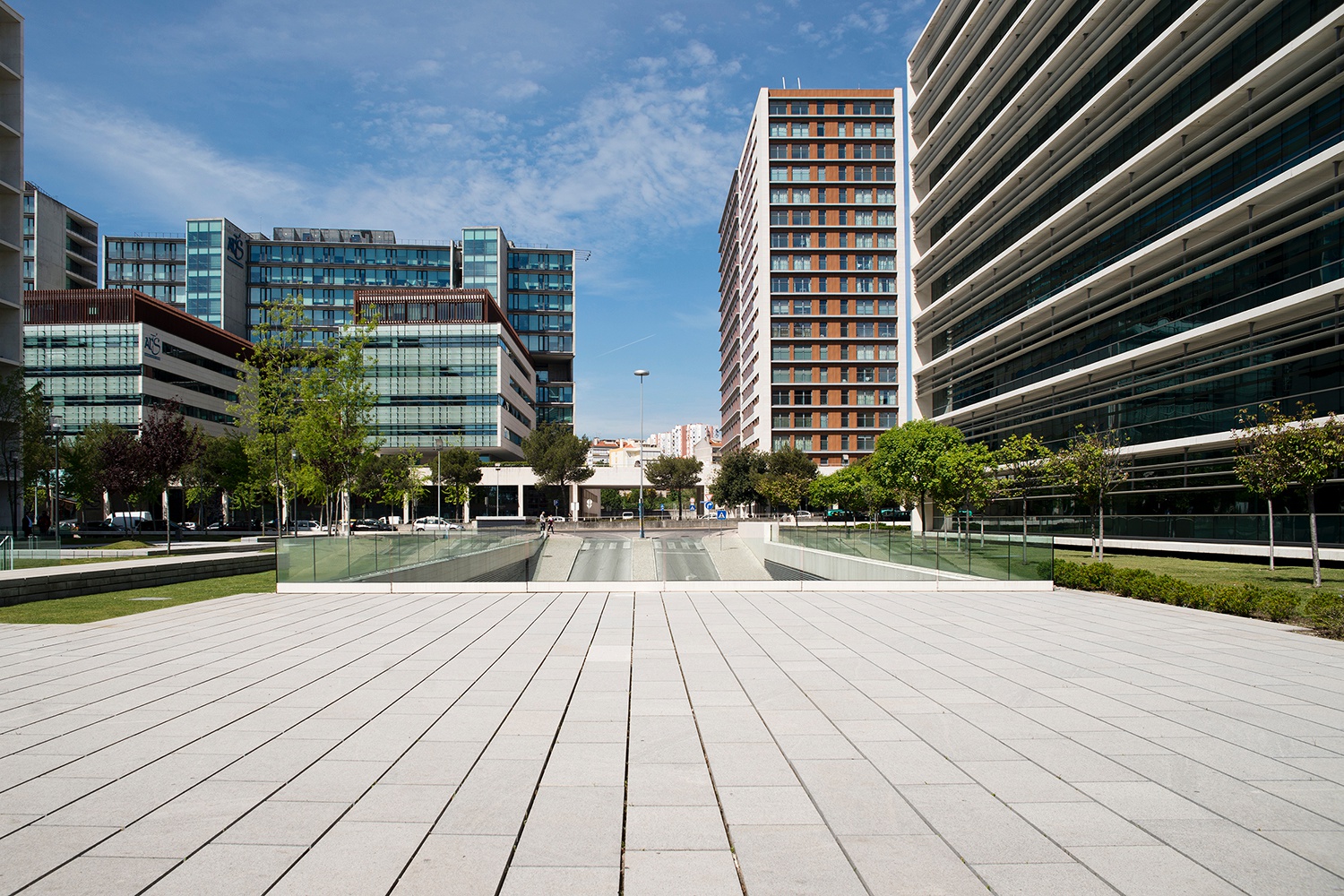Multinationals drive new construction
After years of stagnation, the construction of brand new office buildings is back in force: an average of 17 new projects are being licensed every month across the width and breadth of the country.
Portugal is experiencing a unique period in the real estate sector, and it is no longer confined to the boom of residential or tourist properties. Never before has the capacity to attract multinationals to establish themselves here been so high, which is leading to a true revolution in the office market. Global giants, prominent names such as Google, BNP Paribas and Mercedes, among others, are settling here in scale, leading real estate developers to look at office building construction as an opportunity that’s not to be missed.
A study by Confidencial Imobiliário registered 318 new office projects in the licensing process from the north to the south of the country in the last year and a half alone. This means that, between January 2017 and June 2018, the monthly average was of 17 new projects. This totals over 525,000sqm, with Lisbon taking up the biggest slice – 42% of this area (221,000sqm, distributed across 18 projects).
This return to building brand new projects is “years overdue”, says André Almada, head of the office department at CBRE. “During the recession, the rental prices of the office market weren’t interesting enough for developers to invest in new construction. On the other hand, many of the buildings that had been occupied by companies until then were converted into luxury homes, a process that is very evident on Avenida da Liberdade [in Lisbon]. These two factors led the office market to no longer be able to meet the demand that there is now.”
“The availability rate of spaces to rent in Lisbon dropped from 13.2% in 2013 to the current 8.1%. There was practically no longer a supply of office space,” emphasises Mariana Rosa, director of the Office Agency at JLL.
But the situation has changed. The imbalance between supply and demand is driving up prices, making it appealing once more to invest in this segment. “Suffice it to say that, between 2010 and 2012, we were closing deals in the Western Corridor [the A5 Lisbon-Cascais route, where the likes of Quinta da Fonte and Lagoas Park can be found] with rents in the region of €7 per square metre, and now the figures have more than doubled to €15/sqm. Or that in Parque das Nações, where prices were around €10/sqm, they are now closing at €18.5/sqm,” highlights André Almada.
One of the most advanced projects of this new wave of buildings is being erected precisely in the area of Parque das Nações. The Exeo Office Campus marks the debut of Avenue in the office market, in an investment of €150 million. It consists of around 70,000sqm distributed across three buildings, the first of which should begin construction at the end of this year/early next year. The three buildings will comprise a new-generation office campus with a significant exterior component of 1.3 hectares, “where employees can relax or even keep working but in a more informal environment”, explains Aniceto Viegas, CEO of Avenue.

Expo Oriente office project
The developer has been investing heavily in the luxury residential market, with iconic projects in the renovation field with the conversion of the former headquarters of the Diário de Notícias newspaper on Avenida da Liberdade, and the transformation of the office that once housed the Comércio do Porto paper into 23 luxury apartments in Portugal’s second city. Now, it’s time to invest in the office sector. “There is still a lot of demand for luxury housing; it is a profitable market, but now it has also been interesting to place the focus on the office segment,” says the Avenue CEO.
The area flexibility of the three buildings of the Exeo project will allow it to cater for all types of companies, including those that are finding it more difficult to rent in Portugal: those looking for larger spaces. “One of the buildings, the Lumnia, has the particularity of having entire floors measuring 5,000sqm, which allows a company to occupy a single floor,” explains Aniceto Viegas, noting the importance of developers adapting to the various occupant profiles, including the new wave currently settling down in Portugal.
To cite two examples – Google will employ around 500 people in its new services centre at Lagoas Park, and Mercedes-Benz will create its biggest digital centre in Europe at Hub Criativo do Beato, where they will provide technological solutions on a global scale, except for China and the US.
With Portugal on the map, the projects are flowing and are beginning to unblock. Such is the case of the highly sought-after piece of land of the old Feira Popular (flea market) in Entrecampos – around 144,000sqm – that is in the hands of the Lisbon council. The two public auctions that took place little over two years ago were deserted, which should certainly not happen in the third public auction to take place in the space of a month. The council will dispose of two plots and two parcels of land for construction, part of the Operação Integrada de Entrecampos project, split between the old Feira Popular and the area that links the 5 de Outubro and the Forças Armadas avenues.
Gil Machado, that partner at Confidencial Imobiliário who made an inventory on the projects that will emerge in the next few years, recalls that the “housing market and the office market in Lisbon are finding their geographies – housing is more concentrated in the historical area, and offices are more centred in the areas of Entrecampos, Praça de Espanha, Malhoa, 2ª Circular and Alcântara”.

LACS Co-work Space
JLL’s Mariana Rosa highlights a project in particular in this last area: “The Nova Alcântara project from the SIL group, with 70,000sqm and already allocated to BNP Paribas. The group, similar to others that are establishing themselves in Portugal, has understood that we have good talent, good human resources that warrant looking at the country and investing here.”
But, for now, while the new projects aren’t yet finished, there is plenty of movement in rentals. After the first half of 2018 closed with a year-on-year growth of 11% in office occupancy in Lisbon, in the month of July, occupancy activity shot up in this market. It was the month that registered the highest rise of the year, with an area of 27,576sqm taken over by companies, a 62% increase compared to the previous month and which more than tripled compared to the same month last year.
The figures published by JLL in its market bulletin Office Flashpoint show that July’s activity results not only from the increase of the number of transactions (25 in total), but also from the rise of the average area per transaction (1,103sqm).
“The average area per operation observed in July is the highest of the year, which once again confirms companies’ preference for larger areas. For that reason, in this month, it was the Western Corridor, on the fringe of the A5 and where there are still offices with large areas per floor and immediate availability, that most fed this demand. Of the five biggest operations, three took place in this region,” comments Mariana Rosa of JLL.
The demand was dominated by companies in the technology sector, which generated 54% of operations, but services companies in general also showed an important quota, with a total of over 22%.
Gustavo Brito, architect, founder of the décor store Paris-Sete and the Santos Design District, and partner of LACS, the Lisbon Art Center & Studios, has no doubts that the investment in the technology sector is a winning bet and one to repeat. Inaugurated a few months ago, LACS has created a creative hub for the technology field and a co-working space, in a 5,000sqm area that had been closed for over two decades.
“The building was a ruin. Located in the Lisbon port, on Cais da Rocha do Conde D’Óbidos, it was a canteen and changing rooms for the dockyard workers. But we found this completely destroyed,” says Gustavo Brito.

António Pedro project
Today, the space is buzzing and occupied by around 550 people (half Portuguese, half foreigners) from different companies, among which is EDP Inovação and the headquarters of the Rock in Rio music festival. “We created a creative cluster, which merges work, creativity, leisure and culture,” he explains, adding that the building not only houses work spaces but also art studios and exhibition areas.
The success of LACS’ 5,000sqm in Lisbon has already led the company board to expand the concept. The second LACS, in Cascais, is ready and on the market. Located in the old Logoplaste offices which most recently housed Nokia, it belongs to Filipe de Botton, one of the partners of LACS.
“It’s a modern project, designed by the architect Frederico Valsassina and which we will fill with around 600 people,” notes Gustavo Brito. The offering will certainly meet the demand that is currently being felt in the commercial real estate market.
Record of the decade
The frenzy to rent spaces in office buildings is beating records. In the first seven months of this year, Greater Lisbon registered a rise in demand of 31% compared to 2017, with around 114,000sqm transacted, according to the latest report from the consultants Cushman & Wakefield (CW). It’s a considerable figure indeed. As CW highlights, “after the beginning of the upturn in 2014, the demand for offices in Greater Lisbon has been growing in a sustainable manner, with figures from the first seven months of 2018 at 73% above the average of the last decade”.
The so-called Zone 6 (Western Corridor) concentrated the largest volume of contracted area in the first half of the year – 30% in total –, but it was in Zone 5 (Parque das Nações) that the biggest deal was closed: Teleperformance’s full occupancy of an 8,000sqm building on Avenida Infante Dom Henrique.
Greater Porto also revealed a good dynamic after ending the first half of the year with 30,000sqm transacted. The occupancy of 16,000sqm by BNP Paribas at the Urbo Business Center was the largest operation of 2018, to date.
“Both cities show a lack of availability of quality spaces, with the vacancy rate in Greater Lisbon standing at 7.2%, 140 base points below last year,” concludes the report. The consultants also stress that the market values portray “the positive period currently being felt, with the prime rent in Lisbon at €21/sqm/month and in Porto at €16.5/sqm/month, in both cases achieving highs of the last 15 years”.

Lisboa, Parque das Nações project
The north also has its lure
Lisbon leads the interest of the multinationals when it comes to setting up in Portugal, a natural choice with it being the capital, but the northern region is increasingly an alternative to consider by companies, mostly for its concentration of young, qualified people. According to the survey undertaken by Confidencial Imobiliário, of the 525,000sqm in recent projects already in the licensing phase, around 80,000sqm are centred in the Porto Metropolitan Area. The city known as Invicta (Unvanquished) has 13,2 mil m² of new offices in the pipeline, corresponding to nine projects. “Maia and Matosinhos are the councils in the Porto Metropolitan Area with the most dynamic in new office development, comprising an area of 37,000sqm (seven projects) and 30,000sqm (nine projects), respectively, in the last year and a half. Matosinhos also has one of the only projects in the country with over 20,000sqm, which corresponds to a business centre. In Maia, there are two office projects with more than 11,000sqm, although one of them represents an investment made by the occupants themselves, notes the study.










